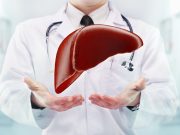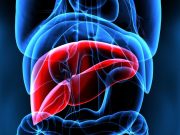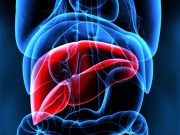Tag: Liver Disease: Misc.
Bulevirtide Linked to Decline in Hepatitis D Virus RNA Levels
Normalization of alanine aminotransferase also seen with bulevirtide 2- or 10-mg
Pegozafermin Leads to Improvements in Fibrosis in NASH
Improvements also seen in NASH resolution with pegozafermin 15 or 30 mg weekly, or 44 mg every two weeks
Novel Dialysis Device Safe, Effective for Acute-on-Chronic Liver Failure
No difference seen in 28-day mortality or occurrence of serious adverse events; time to resolution of ACLF significantly faster
Liver Function Tests Can ID Occult Disorders in Systemic Sclerosis
Predictors of abnormal liver function test include elderly onset of SSc, alcoholic drinking, and edematous skin
Advanced Liver Disease Up With Heavy Alcohol Use With, Without Metabolic Syndrome
Absolute change in advanced liver disease highest in heavy alcohol use subgroups with and without MetS
Bariatric-Metabolic Surgery Effective for Nonalcoholic Steatohepatitis Treatment
Bariatric-metabolic surgery more effective than lifestyle modification plus best medical care
Breakthrough SARS-CoV-2 Similar for Chronic Liver Disease With, Without Cirrhosis
However, full vaccination associated with two-thirds lower risk for death with cirrhosis
Nonalcoholic Fatty Liver Disease Improved With Exercise
Clinically meaningful treatment response occurs independently of weight loss
Intermittent Fasting Plus Exercise Aids Hepatic Steatosis
Among patients with obesity and nonalcoholic fatty liver disease, benefits seen for weight, insulin sensitivity, and liver enzymes
Hospital Volume Affects Liver Surgery Outcomes
Rates of in-hospital mortality, failure to rescue decreased from a hospital volume threshold of >25 liver resections per year














